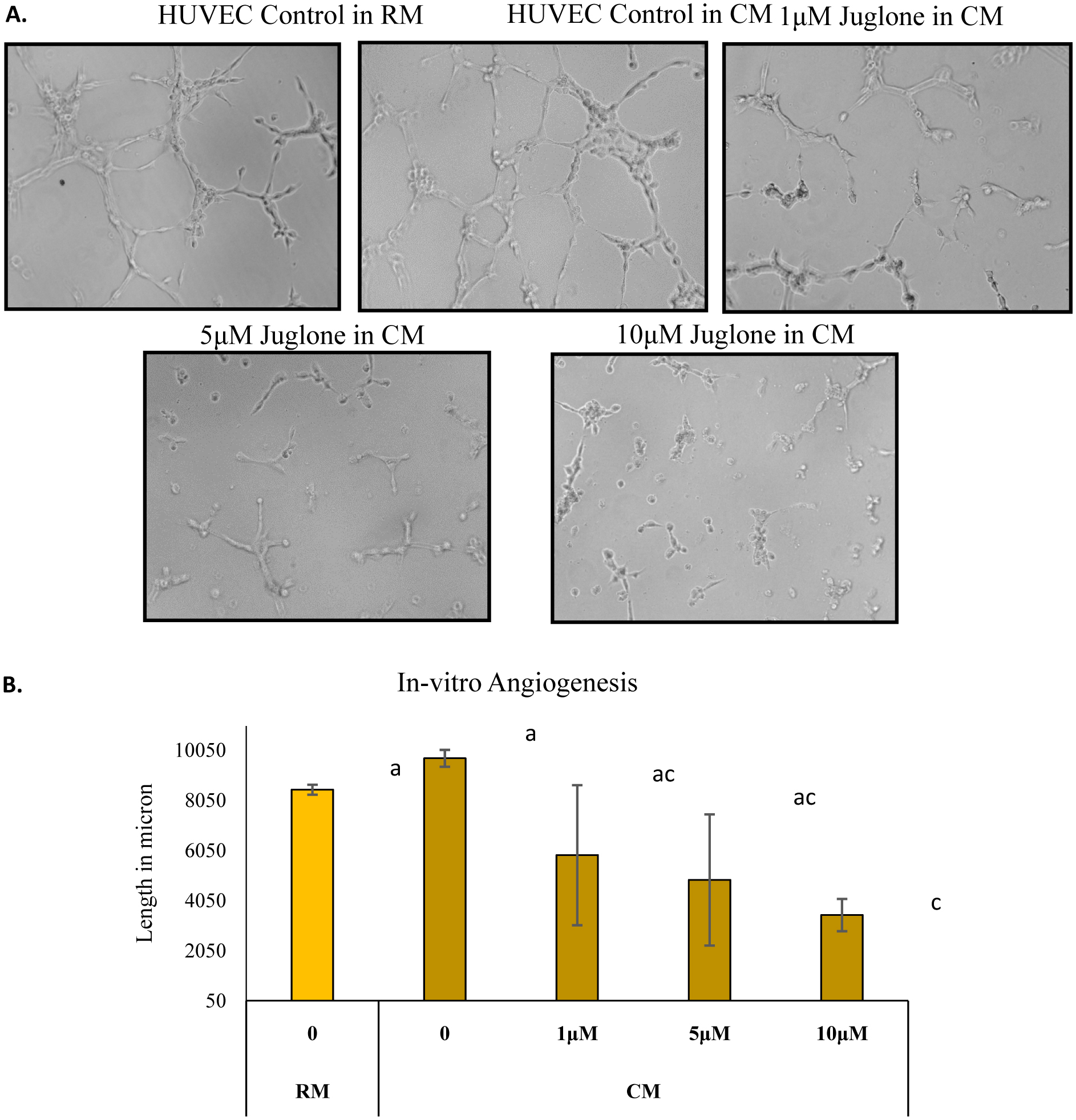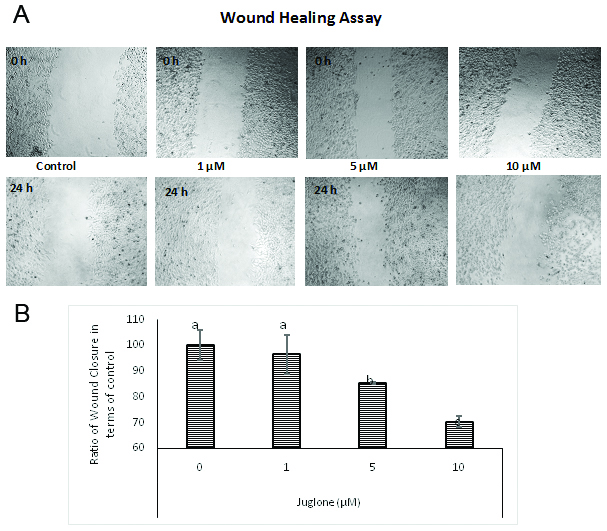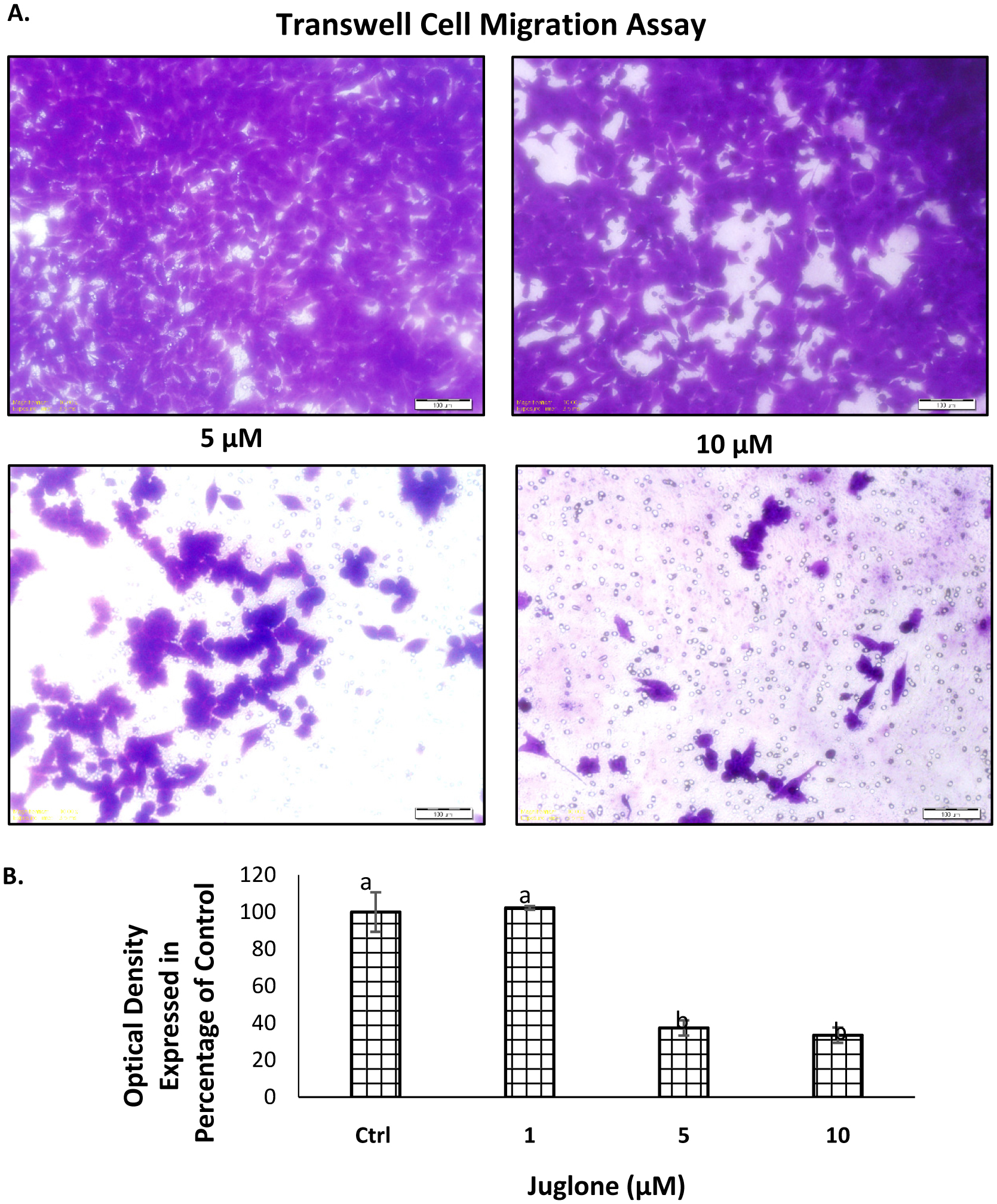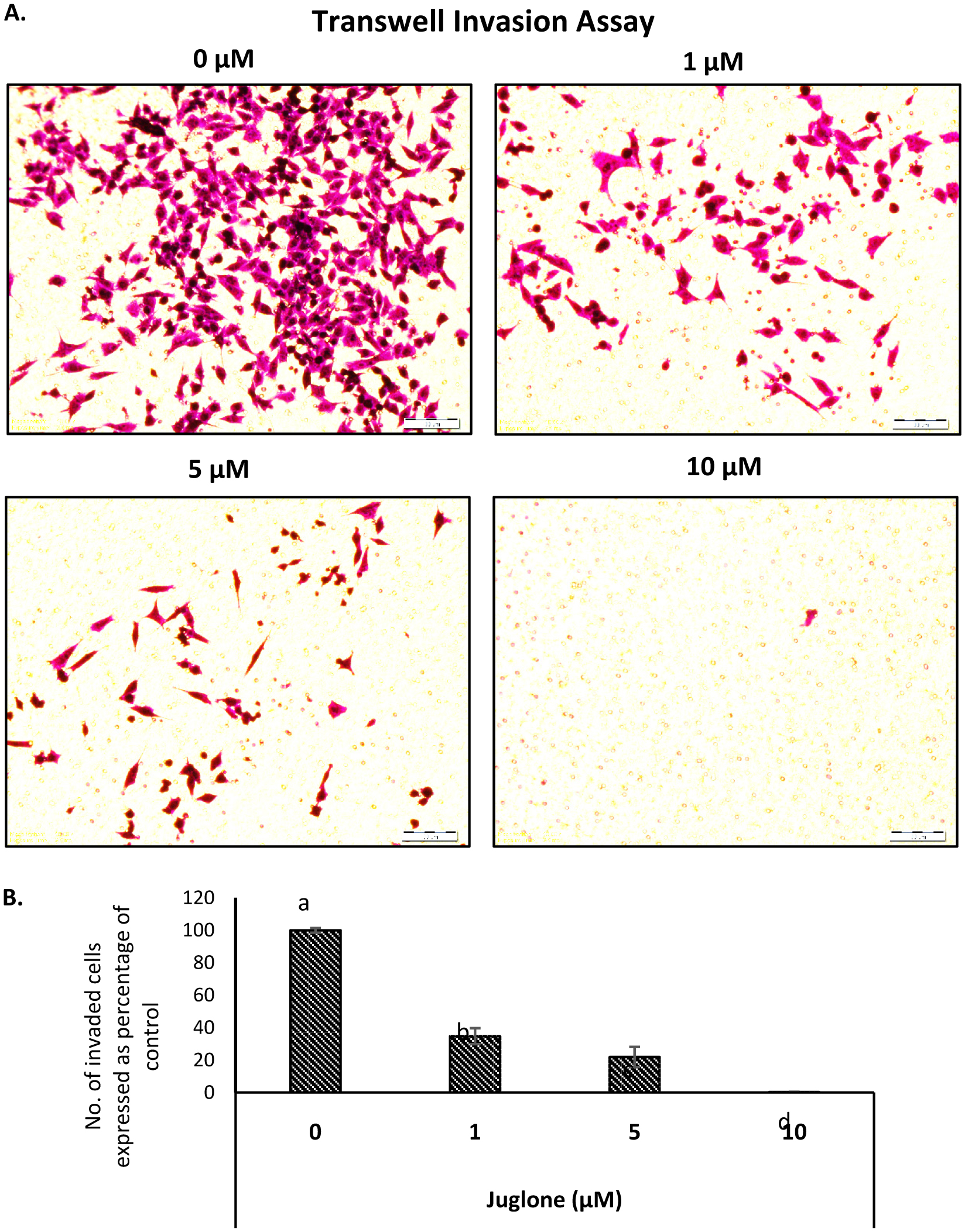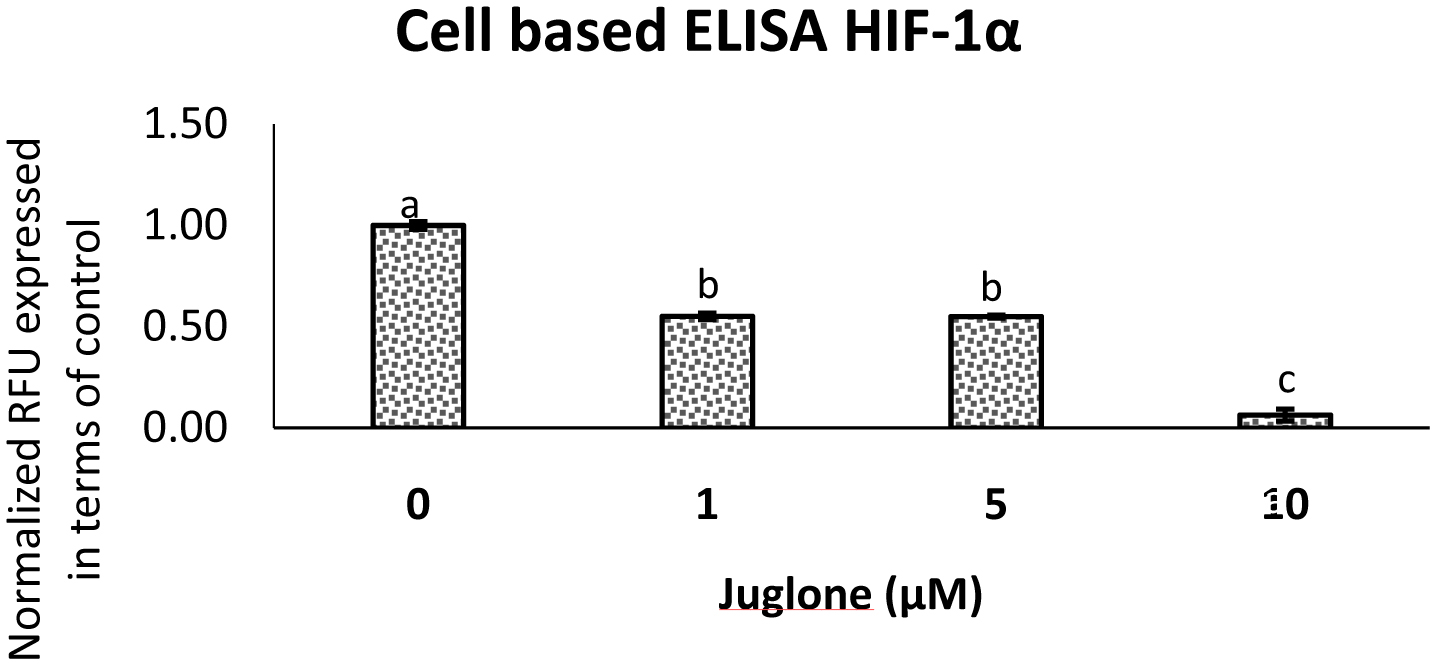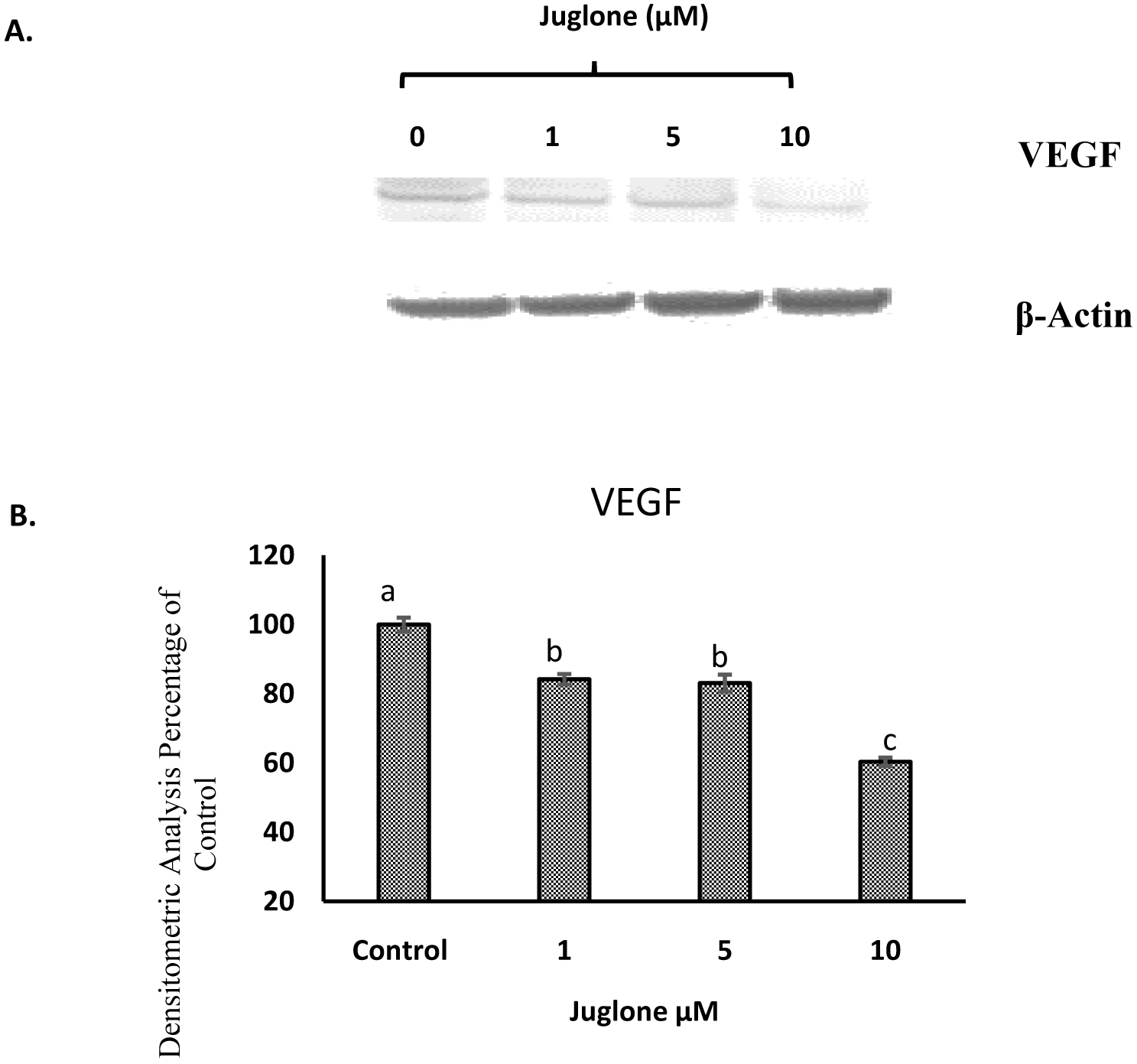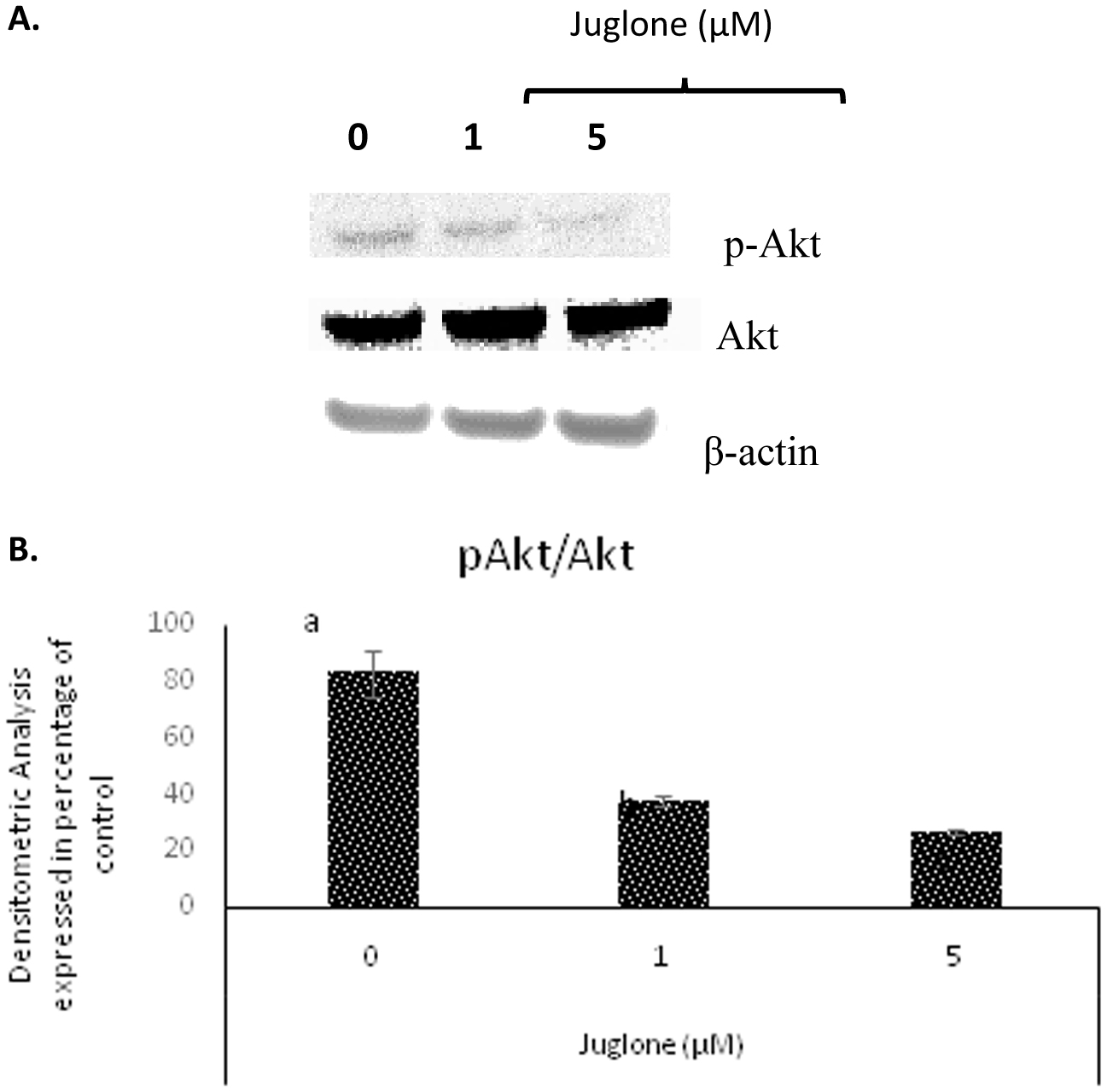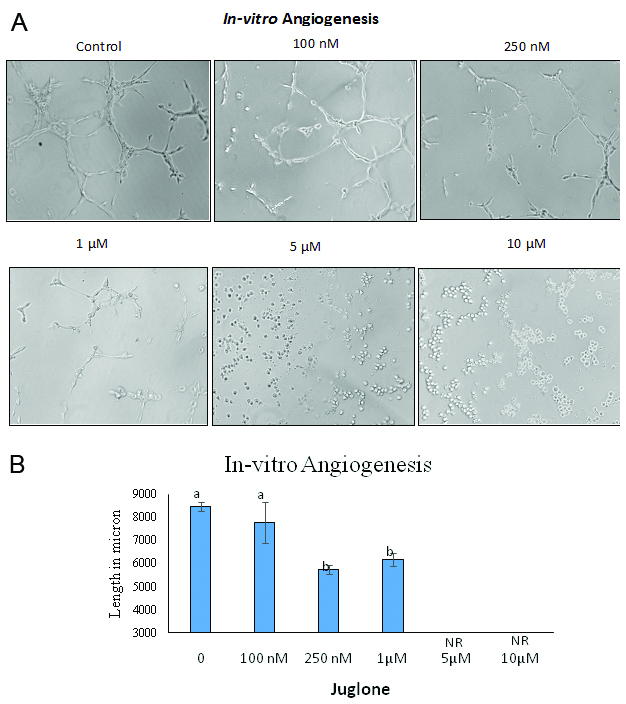
Figure 1.
Effect of juglone on HUVEC tube formation assay
HUVEC were plated on top of polymerized matrigel, incubated with various concentrations of juglone and tube formation was observed after 6 h of incubation (A). The length of capillaries formed was measured using ImagePro software and represented (B). At concentrations 5 and 10 µM the lengths were unreadable (NR).